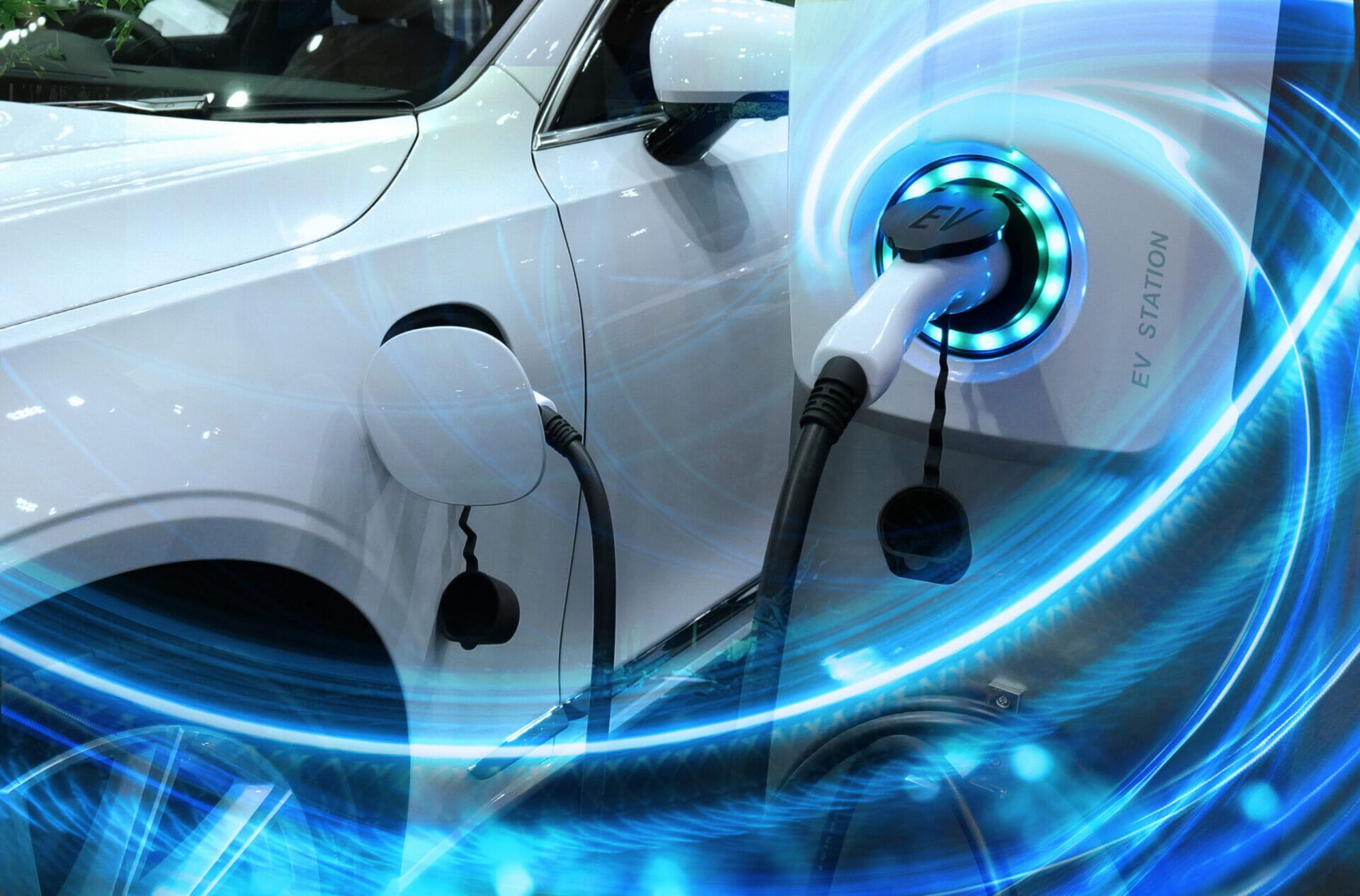Emissions from internal combustion engine vehicles (ICEVs) – i.e. those powered by diesel and petrol – contribute significantly to climate change, with road transport contributing to over 10% of global greenhouse gas emissions[1].
Emissions generated by ICEVs have been shown to have severe consequences for our health, including increasing the risk of respiratory infections, heart disease, and lung cancer. Those who are vulnerable, including children, the elderly and the poorest in society, are the most at risk[2].
In light of this, accelerating the move away from ICEVs and toward electric vehicles (EVs) that don’t produce tailpipe emissions was one of the key strategies of COP26 to mitigate the impacts of climate change and achieve net-zero emissions by 2030[3].
Despite the impact emissions from ICEVs have on our health and the role they play in increasing global temperatures, vehicle manufacturers have in the past failed to take their responsibility for reducing emissions seriously. This was demonstrated by the Dieselgate scandal. Volkswagen were found to have sold vehicles containing software designed to cheat emissions tests. Therefore, their vehicles emitted levels of Nitrogen Dioxide (a pollutant seriously harmful to human health) far above the limits permitted by law[4].
Emissions cheating allegations have also been made against numerous other manufacturers of diesel vehicles, including Daimler, Renault, Nissan and Vauxhall. PGMBM is currently representing over 600,000 consumers who purchased diesel vehicles from these and other car manufacturers.
However, car manufacturers are now jumping on the EV bandwagon, with numerous European car manufacturers, including Jaguar, Fiat, Volvo, Audi, Ford, and Volkswagen committing to 100% zero-emission vehicle production by 2035.[5]
Do electric vehicles really pollute less?
While EVs don’t produce tailpipe emissions, if the electricity used to charge the batteries on which the EVs run is generated by burning fossil fuels, EVs will still be contributing to global greenhouse emissions.
The batteries on which the EVs run are produced using raw materials, such as lithium, which must be extracted from the earth and processed. Notably, the extraction and processing of these kinds of metals and minerals account for 26% of global carbon emissions.[6] Mining for the raw materials needed to produce EVs also has the potential to pollute air and water resources and is often an energy and water intensive activity.
Extracting lithium, for example, is commonly done in one of two ways:
1) Pumping lithium-containing saltwater from underground lakes up to the surface. The water is then left to evaporate, and lithium is recovered from the remaining saline solution. This process requires the use of vast amounts of water (469m3 per tonne of lithium[7]), which has the potential to severely disrupt access to fresh water for drinking and farming for the surrounding populations.
There is also the associated risk of water contamination and air pollution due to the chemicals used to extract the lithium. Examples of this can be seen in the Atacama Salt Flat in Chile, where lithium mining has reduced access to and contaminated local water resources. Similarly, in Argentina’s Salar de Hombre Muerto, locals have raised concerns over the contamination of waterways used for farming and drinking due to lithium mining[8]. This extraction method also produces 5,000kg of CO2 emissions[9].
2) Extracting lithium from open pit mines. Although this method uses less water, it produces 15,000kg of CO2 emissions per tonne of lithium[10].
Given the above, we’re left wondering: are EVs really any greener than traditional ICEVs?
Studies suggest that the answer to this question is yes, but perhaps not as green as we might think.
A 2019 study from Tsinghua University[11] analysed the emissions produced from EVs compared to ICEVs during the manufacturing phase, the use phase and the recycling phase. The study found that during two out of the three phases, EVs actually produced more emissions than their ICEV counterparts.
For instance, during the manufacturing phase, an EV produced around 13 tonnes, whilst an ICEV was found to produce around 10.5 tonnes.[12] During the recycling phase, the estimated emissions for an ICEV were around 1.8 tonnes, whilst for an EV they were just over 2.4 tonnes.[13]
Although the study did conclude that, over the entire life cycle of a vehicle, EVs did produce fewer greenhouse emissions when compared to ICEVs, the study nonetheless demonstrates that labelling EVs as “zero-emissions” is misleading.
The high level of emissions produced and the potential environmental (and human) damage caused by mining the metals used in EV manufacturing also show that mining companies’ statements wishing to present themselves as being at the forefront of challenging climate change are equally misleading.
Are the minerals needed for electric vehicles ethically sourced?
Mining also has a long history associated with the exploitation of workers and severe human rights abuses; mining for the metals used in the batteries which power EVs is no exception.
In a report published by RAID[14] last year, the widespread exploitation and mistreatment of those working in cobalt mines (cobalt being an essential mineral in the lithium-ion batteries used in EVs) in the Democratic Republic of Congo was exposed.
Congolese workers interviewed as part of the report spoke of being “subjected to excessive working hours, degrading treatment, violence, discrimination, racism, unsafe working conditions, and a disregard for even basic health provision.”[15]
What more needs to be done?
Whilst COP26 made clear that a move away from traditional diesel or petrol fuelled vehicles and a transition to cleaner forms of transport is essential to meet emissions targets, there is more that needs to be done to reduce the carbon footprint of EVs and ensure protection for workers that mine the raw materials needed to produce EVs.
These include:
- Ensuring that a greater proportion of the electricity consumed by EVs is derived from renewable energy sources. Global governments need to support disinvestment in fossil fuels and accelerate their investment in renewable energy sources. The higher the proportion of renewable energy generated by a country, the lower the total life cycle emissions generated by EVs will be.
- Vehicle manufacturers should ensure transparency from their suppliers and only choose to work with those that uphold international laws and standards regarding labour, human rights, and the environment.
- Governments must invest in and fund research into how to lower the impact of EV manufacturing on the environment, including research into new technology for batteries so that they use fewer mined materials.
- Greater research and investment into technology and infrastructure to ensure the recycling of components from EVs as these can be used in the manufacturing of future vehicles, which will lead to a reduction in emissions generated by EVs in the future[16].
References [1] https://ukcop26.org/wp-content/uploads/2021/11/COP26-Presidency-Outcomes-The-Climate-Pact.pdf, page 13 [2] https://www.who.int/news/item/15-11-2019-what-are-health-consequences-of-air-pollution-on-populations [3] https://ukcop26.org/wp-content/uploads/2021/11/COP26-Presidency-Outcomes-The-Climate-Pact.pdf [4] https://pogustgoodhead.com/volkswagen-diesel-claim-1/ [5] See 1 and 3 above. [6] https://www.theguardian.com/environment/2019/mar/12/resource-extraction-carbon-emissions-biodiversity-loss [7] https://www.bbc.com/future/article/20201124-how-geothermal-lithium-could-revolutionise-green-energy [8] https://www.foeeurope.org/sites/default/files/publications/13_factsheet-lithium-gb.pdf [9] See 7 above [10] Ibid. [11] Life cycle greenhouse gas emissions of Electric Vehicles in China: Combining the vehicle cycle and fuel cycle, Energy, Volume 177, 15 June 2019, Pages 222-233 [12] Ibid. [13] https://theconversation.com/climate-explained-the-environmental-footprint-of-electric-versus-fossil-cars-124762 [14] https://www.raid-uk.org/sites/default/files/report_road_to_ruin_evs_cobalt_workers_nov_2021.pdf [15] https://www.raid-uk.org/blog/cobalt-workers-exploitation [16] https://theconversation.com/climate-explained-the-environmental-footprint-of-electric-versus-fossil-cars-124762









